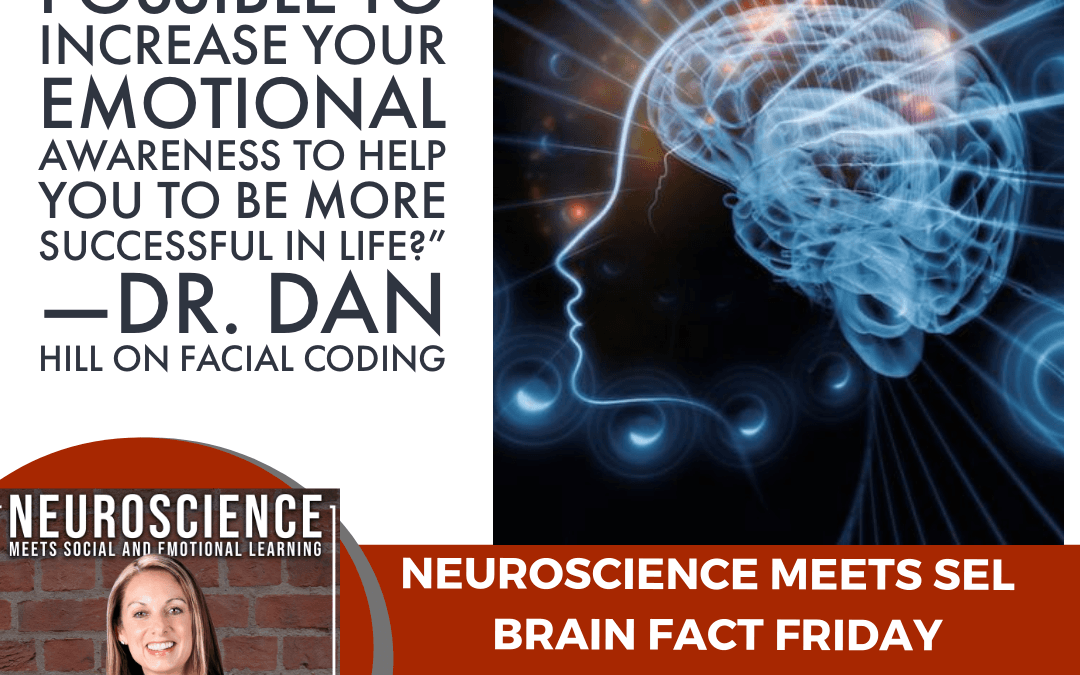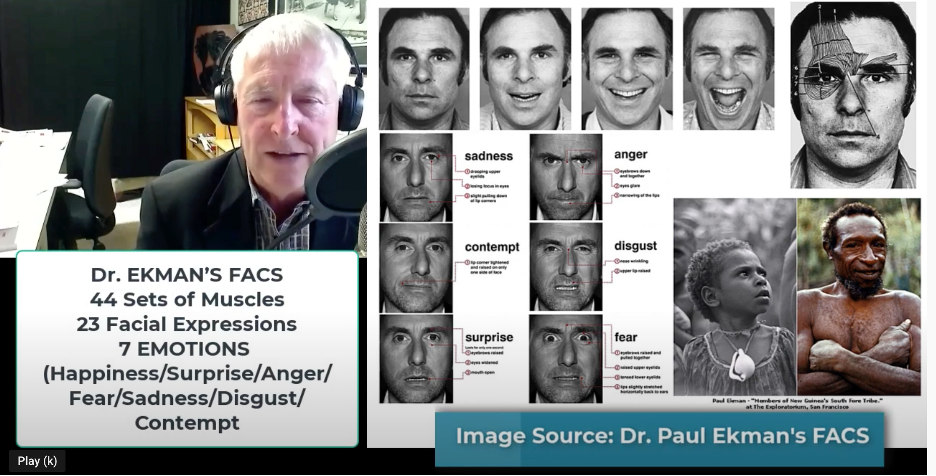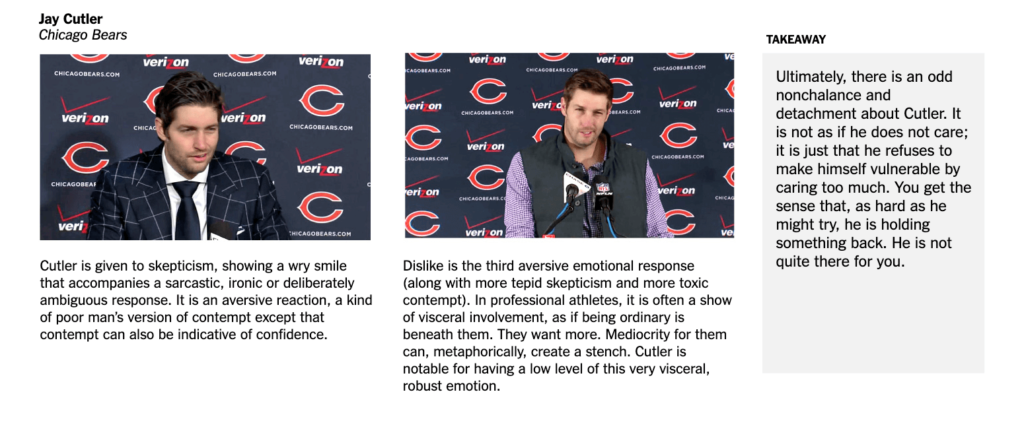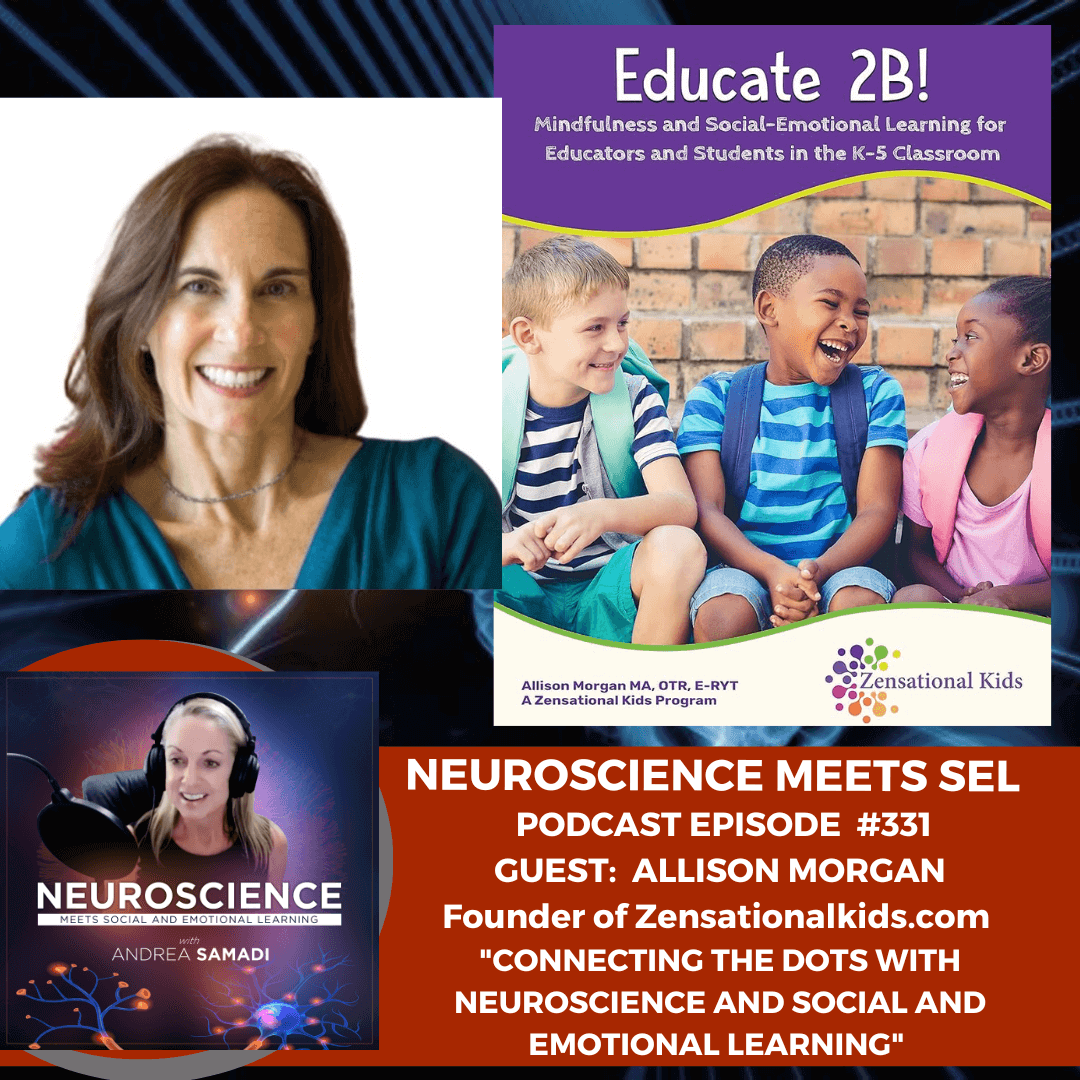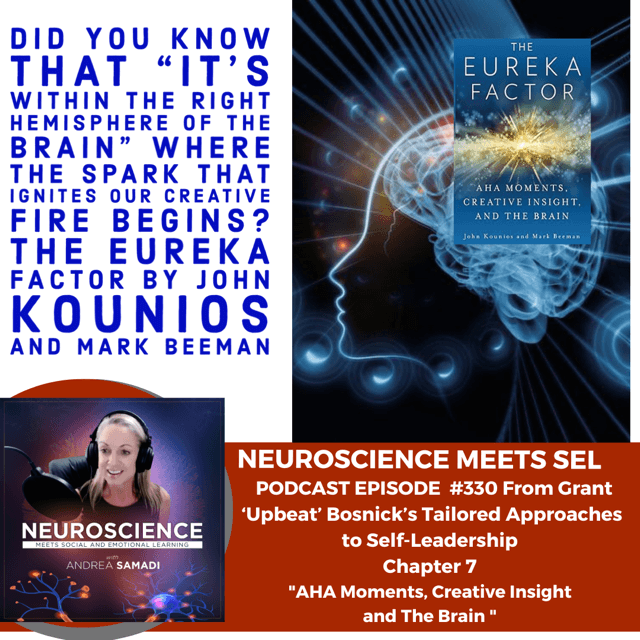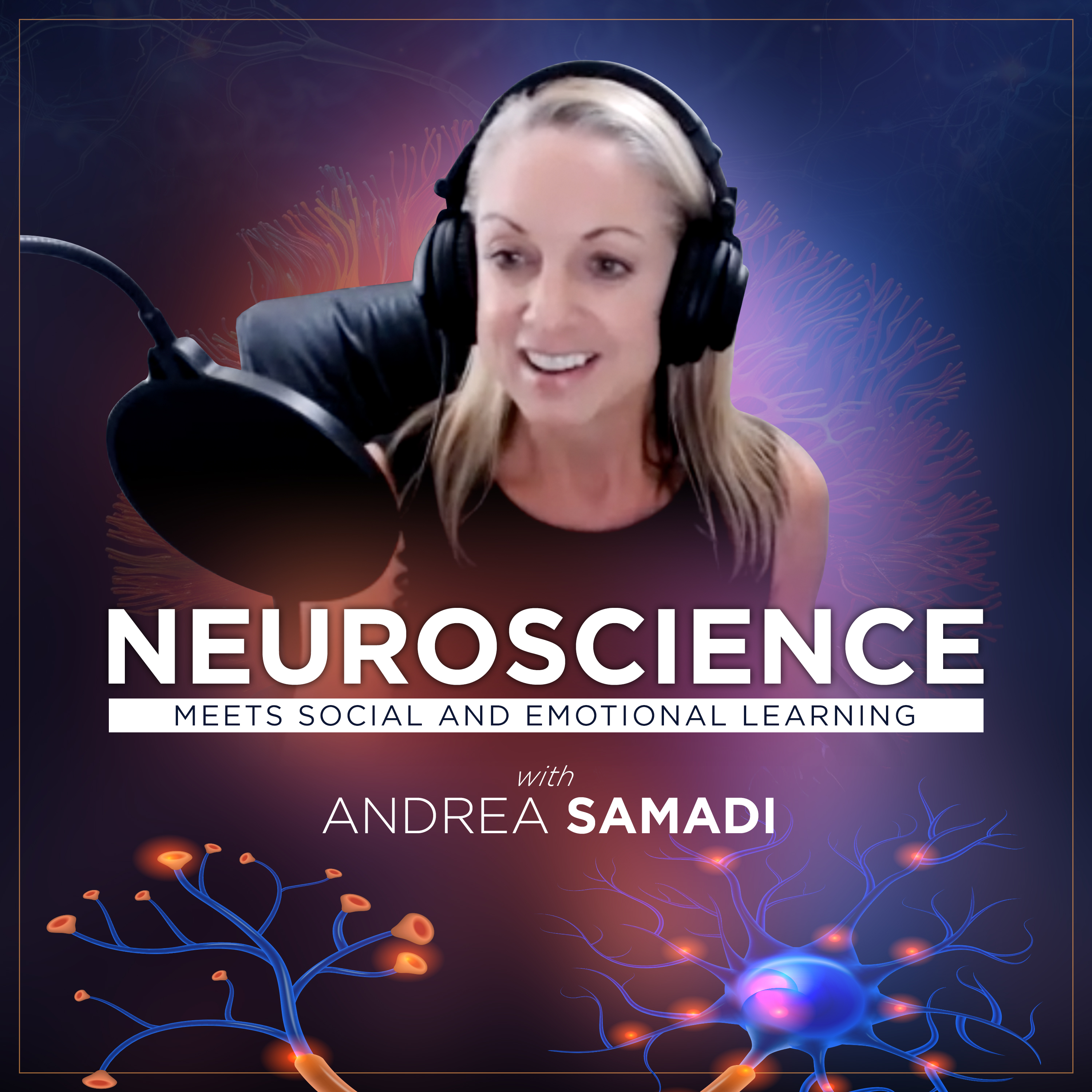Welcome back to the Neuroscience Meets Social and Emotional Learning Podcast for Brain Fact Friday and EPISODE #164 that ties back into our interview released this week, episode #163 with Dr. Dan Hill on “Facial Coding: How to Read the Emotions in Others” since there was so much he explained in that interview that I think is important for all of us to think about, and dig deeper with, whether we are using these ideas in our schools, sports environments or workplaces.
For those who are new here, I’m Andrea Samadi, author, and educator from Toronto, Canada, now in Arizona, and like many of you listening, have been fascinated with learning and understanding the science behind high performance strategies in our schools, our sports, and workplace environments with ideas that we can all use, understand and implement immediately. My vision for this podcast is to bring the experts to you, share their books, resources and ideas to help you to implement their proven strategies and a day doesn’t go by that I don’t hear from someone who has found this information to be important and useful in their life. Thank you for the feedback. We can all use motivation at times.
If you take a quick look through our episodes that began in June 2019, you will notice this podcast draws many high-level guests who have spearheaded the understanding of how our brains works, tied to social and emotional learning (in our schools or sports environments) or emotional intelligence (as it’s called in our workplaces) to help us to all improve our results. This has always been the goal of the podcast that was originally going to be a course for an educational publisher, until a turn of events caused me to decide to release my best work with the hopes it would help those who are looking to implement the most current brain research into their work. This is just the beginning of the vision I have but can clearly see that this is a topic that holds an international interest, so I will continue to create content to help us to all understand and implement this research in the new field of educational neuroscience.
In Today’s Brain Fact Friday, You Will Learn:
✔︎ The Top Emotions Dr. Hill Looks for when using his Facial Coding System to Read Others.
✔︎ How to Apply Facial Coding in Your Classroom, Workplace or Sports Teams.
✔︎ What We Should All Know, Understand and Look for With Other People’s Emotions.
Which Leads us to This Week’s Brain Fact Friday:
After editing and re-listening to Dr. Dan Hill, from episode #163, I had 2 major takeaways.
THE PIVOT: The first takeaway I had was that Dr. Hill pioneered a successful career using facial coding, when he had to pivot his career focus in his early years. Many of us listening would recognize and understand this pivot, as we have done it in our own careers ourselves. Back in my early days as a teacher (I was trained by the Raptor’s Coach as a Level 1 Technical Coach) and the pivot is something you never forget. If you remember it on a basketball court, it’s a hard turn, where you stop and shift directions quickly and suddenly, turning your back to your original direction. This is exactly what Dr. Hill had to with his career and reminded me of mine. I had to learn how the brain works in 2014 when an educator sat me down and gave me the most valuable feedback I have ever received, and I know that the pandemic caused many of my friends and colleagues to also make some sort of shift with their work. Have you ever had to make a pivot?
Last week I heard from someone I am working on bringing on the podcast who works in the field of professional sports, with a well-known sports team that I hear about daily, since it’s my husband’s favorite team and this person also made a noticeable pivot in their career towards leadership when he recognized that lifelong learning was his ticket for future success, bringing him to this podcast to see what else he could learn. We connected on LinkedIn, and when we spoke on the phone, immediately connected. I was honored that he was listening, and he was honored that I had asked him if he would be a guest on the show to share how he made his pivot towards lifelong learning and the impact that had on his life. Stay tuned, as I’m hoping we can make this interview happen quickly.
USING FACIAL CODING: Dan Hill’s episode also taught me a lot about how we can all use an understanding of facial coding or reading the emotions in others in our life that originated from the work of Dr. Paul Ekman,[i] an American psychologist and professor emeritus at the University of California who was ranked 59th out of 100 most cited psychologists of the 20th century, whose work was behind the popular TV Series Lie to Me.[ii]
IMAGE SOURCE: https://www.paulekman.com/amp/
If you have not listened to episode #163, go back and listen to it before you go on with this one.
This week’s Brain Fact Friday, I want to share the tips that Dr. Hill noted were helpful when reading the emotions of someone he is looking to recruit for a sports team, or to think about how this could be used in the classroom to identify a student who might be lost or what emotions would make someone a valuable team player in the workplace. If we can learn to recognize the emotions in others, the result will be that we can also recognize emotions in ourselves, which was the idea behind the work of the Founder of the Yale Center for Emotional Intelligence, Marc Brackett and his book, Permission to Feel[iii] who was one of our early interviews.
For this week’s Brain Fact Friday—
Did you know that it’s possible to increase your emotional awareness to help you to be more successful in life, happier in your marriage, be an expert at handling your kids, a better manager at work, a more effective coach in sports, a better hiring manager, close more sales, or negotiate a better deal for yourself just by understanding how to read someone else’s facial expressions? You can learn more from Dr. Dan Hill on this topic through his books and website[iv], but for this week’s Brain Fact Friday, I will summarize what Dr. Hill looks for whether he is picking a player for a pro sports team or looking for a student who is lost in the classroom, or someone feeling isolated and alone in the corporate environment.
Tips for Using Facial Coding in Sports, the Classroom and Modern Workplaces:
When Dr. Hill was asked to help the Milwaukee Bucks to recruit players that would be a good fit for their team, he mentioned there were some key emotions he was looking for.
1. Happiness: This emotion was easy to spot with a Duchenne Smile[v], which is an expression that signals true enjoyment. This type is smile is contagious and lights up a room. You can’t miss that twinkle in someone’s eye. Dr. Hill looks for this sign when recruiting players because it correlates to someone who is coachable, solutions oriented, embraces others, is embraced by them, could connect to others, and build a sense of community.
BE AWARE OF: A fake smile that lingers too long, or comes and goes too quickly, or an asymmetrical smile that some people would say shows insincerity but could also signify this person has complicated thoughts going on.
2. Anger: Hill looks for someone to have a degree of anger. Not crazy anger, but enough that suggests they are driven and could be in control of their own destiny, making progress towards their goals. Michael Jordan shows anger which Dr. Hill says shows his focus and determination.
BE AWARE OF: Those who are unable to calm themselves down when their blood starts to boil. Anger can be a good thing, especially when its expressed, but be careful not to hold anger inwards as this can impact our health.[vi] Learn stress relieving strategies like deep breathing and meditation to calm the amygdala and bring balance back to the prefrontal cortex, or our decision-making part of our brain.
3. Contempt: Hill says there is a fine line with this emotion that can often point towards confidence/swagger, but it can also suggest that you think you are above others, which wouldn’t make you the best teammate, or someone who would take the advice of a coach.
BE AWARE OF: This emotion is according to John Gottman[vii], is the #1 predictor why a marriage will fail. That smirk means I don’t respect or trust you. In a sports environment, you can see it in Jay Cutler’s image that could show his confidence (first picture) but added to dislike, can also show that mediocrity is beneath him.
4. Disgust: Correlates well with someone who has a drive to succeed, like in Jay Cutler’s example above, that mediocrity is below them or disgusts them and he wants to get to that next level.
BE AWARE OF: That a player like this might not make the best teammate, but they do make excellent CEOS with that drive for success.
5. Sadness: Worries Dr. Hill and he sees an inverse correlation with sadness in sports because it slows you down mentally and physically. This emotion he says is a liability.
BE AWARE OF: The fact that this emotion is a sign that you have lost connection, and whether on a sports team, in a classroom or workplace, needs intervention.
6. Confusion Mixed with Fear: Hill warns this emotional mix is cause for concern in the classroom as this student is lost and would need immediate intervention.
7. Inability to Feel Empathy: When working on murder trials, this emotion was something he noticed. For someone who can read faces, usually you can pick up micro expressions, but these were notably missing with a murderer.
BE AWARE OF: With the lack of empathy, he noted that these types of people had inappropriate smiles or the wrong emotion for the situation (laughing at the wrong time). You will feel something is not quite right, and won’t want to be in this person’s presence.
Dr. Hill reminds us that using Facial Coding, or even Theory of Mind to read the emotions in someone else might be able to point us towards what someone is feeling, but we can’t know why they are feeling this way, without asking them. When you notice a blend of emotions, like confusion mixed with fear in your student, or pride that can show a mix of emotions like happiness (that I succeeded) with anger (but look at the work it took to get here) you can get in the ballpark of the emotions someone feels, but a conversation goes a long way to going deeper into learning more, and uncovering what might be going on with that person.
To close out this week’s brain fact Friday, I think it’s important to note that we aren’t always looking for the positive emotions when looking to move towards our goals and make progress. Recognizing the negative feelings of being lost or unsure of your direction can cause for significant change like Dr. Hill noted when his friend turned him towards the direction of Facial Coding, or the Pro Sports Connection I spoke about who turned towards leadership, or when I had to quickly add an understanding of the brain to my work. This leads us to fear that Dr. Hill mentioned could be a strong motivator as long as it doesn’t lead you to freeze up in the process.
When you start looking closer at the emotions of others, it will give you more insight as you learn that “actions or facial coding, speaks louder than words” and this practice will get you closer to what someone is thinking and feeling, but nothing beats a face-to-face conversation to know with 100% certainty.
Have an incredible weekend! See you next week!
REFERENCES:
[i] https://www.paulekman.com/amp/
[ii] The Truth Behind Lie to Me https://www.paulekman.com/blog/truth-behind-lie/amp/
[iii] The Neuroscience Meets Social and Emotional Learning Podcast with Marc Bracket on his book “Permission to Feel” https://andreasamadi.podbean.com/e/founding-director-of-the-yale-center-of-emotional-intelligence-on-his-new-book-permission-to-feel/
[iv] https://emotionswizard.com/about-the-emotions/
[v] https://www.researchgate.net/figure/The-Duchenne-smile-left-versus-the-social-smile-right-Social-smiles-use-only-the_fig4_337322714
[vi] How the Brain Works with Anger Published on YouTube October 9, 2019 https://www.youtube.com/watch?v=t1fSzTiOzdA
[vii] https://www.gottman.com/about/research/couples
Podcast: Play in new window | Download
Subscribe: Apple Podcasts | RSS





